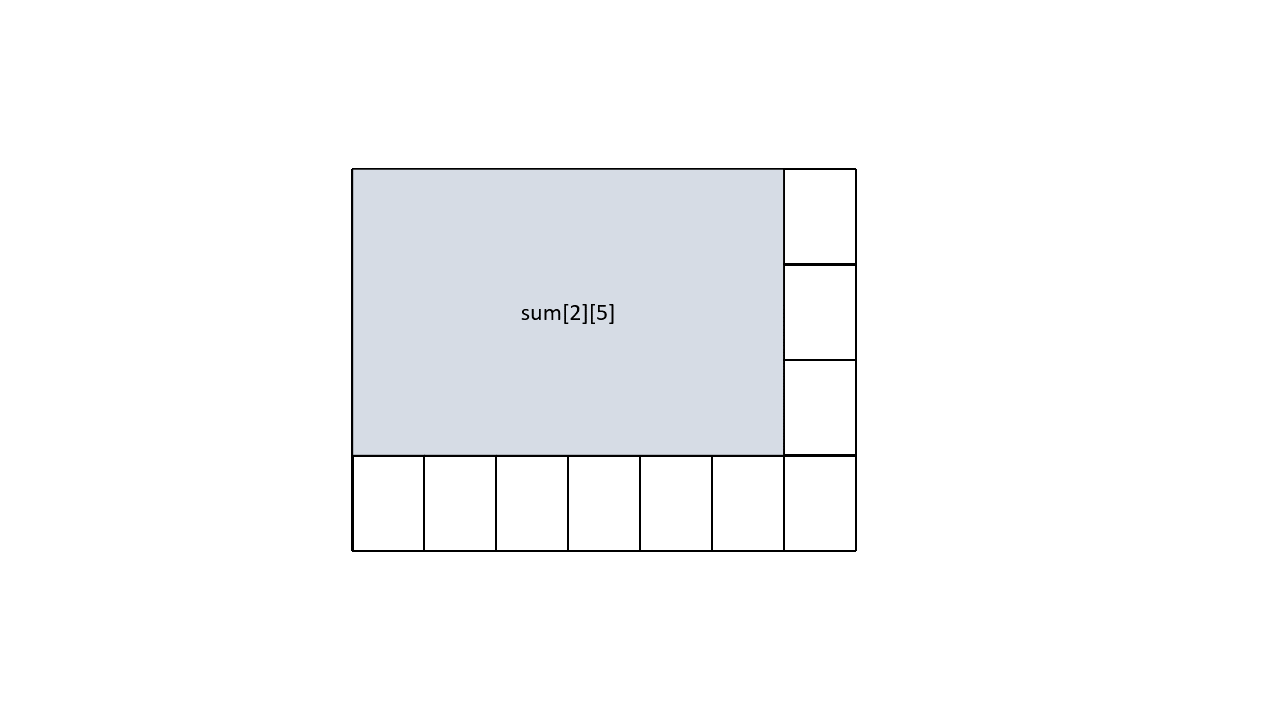Summed Area Table
Suppose you have a very large matrix A and you would like to calculate the sum of a submatrix that resides within A. How would you do that?
It would be relatively straightforward, if you had do it just once. You would sum up all the elements in that submatrix which would be of O(m*n) time complexity, where m is the number of rows and n is the number of columns in the submatrix. The question becomes a bit more complex if you have to query the sum of different submatrices multiple times. Unsurprisingly, such use-cases do come up in Computer Vision and Computer Graphics, and O(m*n) time complexity can get incredibly disturbing for repetitive calls.
Perhaps on such a disturbed day in 1984, Frank Painter rose to the challenge and wondered if he could somehow preprocess matrix A so that it would take constant time to retrieve the sum of any submatrix. The answer was yes. Not only the sum, but you can preprocess your matrix to efficiently retrieve any other statistics such as mean or standard deviation for its submatrices. When I first came across this problem, I got completely befuddled and my first thought was to calculate all of the sums for all the submatrices and store it by some index. Needless to say that would have been an astonishingly inefficient solution and Frank did not go that way. Now let’s follow Frank’s footsteps and ponder together…
In order to query the sum of a submatrix, we first need to define it. The submatrix can be defined by 4 arguments. Let’s call them x_low, x_high, y_low and y_high. If we were to draw a straight line for each of them, the submatrix would be the rectangular area constrained by these 4 lines. The number of elements in this submatrix would be (x_high - x_low + 1) * (y_high - y_low + 1) and we need to return the sum of all elements. It is clear that we have to scan the matrix, make some computations and then store the results to decrease time complexity. What if we calculate and store the submatrix sums for all submatrices defined by (0,0) and (x,y)? Compared to storing the results for each and every possible submatrix, this would be much more efficient. Let’s see if this would work.
Suppose that we can only query this interface for (x,y) which then would return the sum of the submatrix defined by (0,0) and (x,y). How can we use this method to calculate the submatrix defined by (x_low,y_low) and (x_high,y_high)? The answer becomes apparent when you draw and visualize the problem…

// returns the sum of all elements in submatrix defined by x_low = 0, y_low = 0, x_high = x & y_high = y
int sum_submatrix(int x, int y);
int sum_submatrix(int x_low, int y_low, int x_high, int y_high) {
return sum_submatrix(x_high, y_high) - sum_submatrix(x_high, y_low-1) - sum_submatrix(x_low-1, y_high) + sum_submatrix(x_low-1, y_low-1);
}Now let’s move on to calculating the submatrix sum for submatrices defined by (0,0) and (x,y). It is best to simplify the problem and visualize the solution with a 1D array. Suppose that the 1D array below is the first row of A and that we need to calculate all the submatrix sums from (0,0) to (0,4).
[1,5,1,6,8] ---> [1,6,7,13,21]Notice the pattern in the 1D case? It all comes down to calculating the submatrix sum cumulatively. We can generalize this solution to the 2D case as below. Note that we subtract dp[i-1][j-1] to prevent it to be counted twice (which is easy to figure when you visualize your solution).
class SummedAreaTable {
public:
SummedAreaTable(const std::vector<std::vector<int>> & A) {
int M = A.size(), N = A[0].size();
dp = std::vector<std::vector<int>> (M+1, std::vector<int>(N+1,0));
for(int i = 1; i <= M; ++i)
for(int j = 1; j <= N; ++j)
dp[i][j] = dp[i-1][j] + dp[i][j-1] - dp[i-1][j-1] + A[i-1][j-1];
}
int get_submatrix_sum(int x_low, int y_low, int x_high, int y_high) const;
private:
std::vector<std::vector<int>> dp;
}Now let’s rewrite sum_submatrix using dp. This way we can retrieve the sum of all elements in the submatrix in constant time.
int SummedAreaTable::get_submatrix_sum(int x_low, int y_low, int x_high, int y_high) const {
return dp[x_high+1][y_high+1] - dp[x_high+1][y_low] - dp[x_low][y_high+1] + dp[x_low][y_low];
}Remember that this algorithm can also be used to retrieve stastics like mean and standard deviations. When you have the sum for the submatrix, it is straightforward to retrieve the mean. You only need to calculate the number of elements in the submatrix.
class SummedAreaTable {
public:
SummedAreaTable(const std::vector<std::vector<int>> & A) {
int M = A.size(), N = A[0].size();
dp = std::vector<std::vector<int>> (M+1, std::vector<int>(N+1,0));
for(int i = 1; i <= M; ++i)
for(int j = 1; j <= N; ++j)
dp[i][j] = dp[i-1][j] + dp[i][j-1] - dp[i-1][j-1] + A[i-1][j-1];
}
int get_submatrix_sum(int x_low, int y_low, int x_high, int y_high) const;
int get_num_elements(int x_low, int y_low, int x_high, int y_high) const;
double get_submatrix_mean(int x_low, int y_low, int x_high, int y_high) const;
private:
std::vector<std::vector<int>> dp;
}
int SummedAreaTable::get_submatrix_sum(int x_low, int y_low, int x_high, int y_high) const {
return dp[x_high+1][y_high+1] - dp[x_high+1][y_low] - dp[x_low][y_high+1] + dp[x_low][y_low];
}
int SummedAreaTable::get_num_elements(int x_low, int y_low, int x_high, int y_high) const {
return (x_high - x_low + 1) * (y_high - y_low + 1);
}
double SummedAreaTable::get_submatrix_mean(int x_low, int y_low, int x_high, int y_high) const {
return std::static_cast<double>(get_submatrix_sum(x_low, y_low, x_high, y_high)) / get_num_elements(x_low, y_low, x_high, y_high);
}Lastly, you can find the much better illustrated solution here.
Next, I will look into its more advanced use-cases.